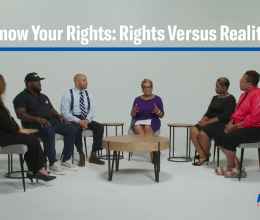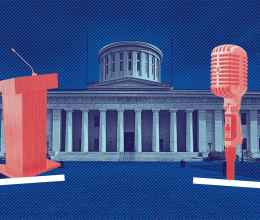The monumental events of the Civil Rights Movement in the 1960s gave hope to many African-Americans who desired an end to racial segregation and discrimination. The abolishment of Jim Crow laws ended the implementation of laws that supported racial segregation in Southern states.
Likewise, the Supreme Court case Brown vs. Board of Education found state laws that established the separation of public schools for black and white students to be unconstitutional. While these decisions appeared to create improvements for a new generation of African-Americans, our society today continues to create racially homogeneous neighborhoods. Thus, racially segregated school districts are formed, and as a result, future potentials are affected.
School Segregation Today
The present climate regarding racial segregation in schools is a bit different than it was in the 1960s. Racial segregation used to exist within school districts. School children were designated to different classrooms, water fountains, and bathrooms depending on their race. But now, racial segregation has evolved to segregation between districts, often isolating and creating barriers between neighborhoods. Because laws do not exist that support segregation today, segregation is driven by attitude and decisions of families in the schools they choose.
Socio-economic disparities still exist between black and white families, according to a 2013 report from The Economic Policy Institute. Around 39 percent of black children are from families with incomes below poverty line, compared to 12 percent of white children. Moreover, 28 percent of black children and only 4 percent of white children live in high poverty neighborhoods. Therefore, there is a difference in the quality of education for black and white students.
White families are often more economically advantaged to move to school districts with more resources and better educational opportunities. Black students, however, often live in poverty concentrated areas and attend schools of lower quality. A study by the Civil Rights Project at UCLA showed that Southern California schools with majority African-American and Latino student populations were less likely to have qualified teaching staffs, rigorous mathematical curricula, students graduating on time, and students attending postsecondary institutions.
Due to these disparities, segregation throughout the United States in recent years is the same as during the 1960s. In both 1968 and 2011, only 23 percent of African-Americans attended majority white schools. From 1954 to 1988, however, the percentage of black students integrated into majority white schools increased from 0 to just over 43 percent, but declined after 1988. Interestingly, mass incarceration became a prominent issue in the late 1980s.
Considering the historical nature of segregation in the United States, it would seem that southern states would continue to experience the highest rates of racial segregation. Surprisingly, states in the Northeast have the highest segregation due to high district fragmentation, which means that school district boundaries are created in consideration of the characteristics of the population.
Ohio: Segregated and Unequal
Ohio is fourth, tied with Pennsylvania, in the top 20 states with the most segregated schools. About 28 percent of black students attend majority white schools, only 5 percent above the national average. Similarly, Cleveland is ranked seventh in the country for exhibiting one of the highest rates of segregation. Unfortunately, Cleveland schools show how segregation can have negative effects on students of color. The average African-American student in Cleveland performs below almost two-thirds of African-Americans nationwide and below almost all white students nationwide.
Why is it so important that we break down the walls of racial segregation in our schools?
As Rosa Parks once rightly noted, “Racism is still with us. But it is up to us to prepare our children for what they have to meet, and, hopefully, we shall overcome.”
By allowing all students, regardless of race, to attend high quality schools with greater resources and support, students are more likely to reach their full potential and find the confidence in themselves to achieve their goals. Inclusive schools teach students how to have compassion, tolerance, and respect for the differences in our races, cultures, religions, socio-economic backgrounds, and genders. Schools provide students with crucial lessons on how to live and take pride in the diversity of the United States.
As Rosa Parks once rightly noted, “Racism is still with us. But it is up to us to prepare our children for what they have to meet, and, hopefully, we shall overcome.”
Lauren Hawkes was a summer intern at the ACLU of Ohio.









